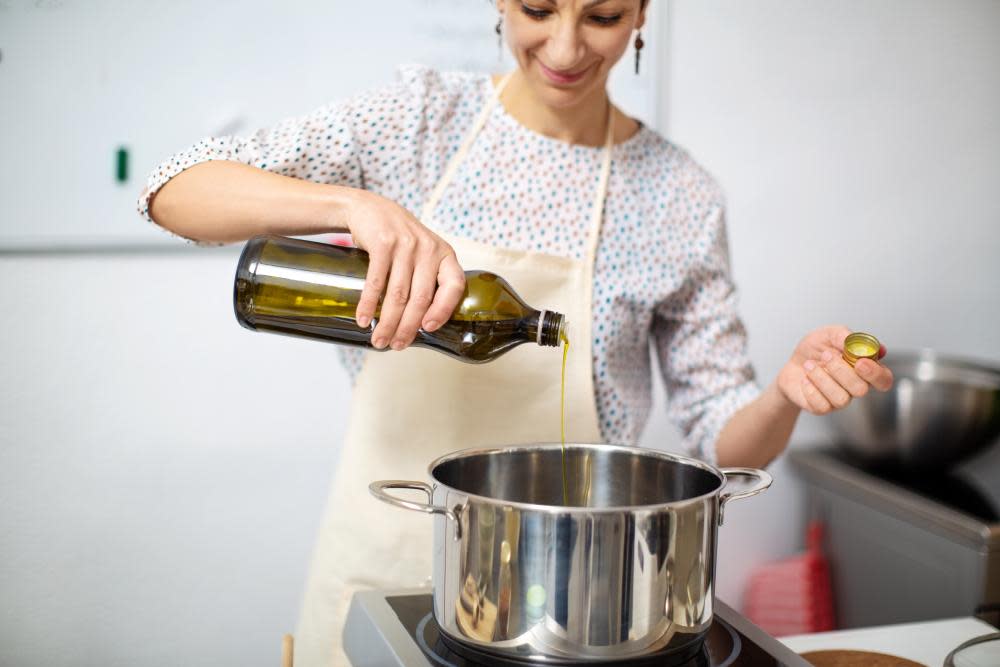How often can I use the same frying oil – and how do I get rid of it responsibly?

Can you explain the dos and don’ts of reusing frying oil? And when it is time to say goodbye, how do you dispose of it responsibly?
Chris, Fakenham
There is no denying that frying the likes of pakora and puri requires a lot of oil, so it makes sense to use it more than once. Chris is right, though: there are a few rules to follow to get the most out of the hot stuff.
First, lay the foundations. If your frying game is off, reusing your oil won’t be an option. “The most important thing is to treat it well in the first place,” says Feast’s zero-waste correspondent Tom Hunt. “This means not burning the oil or letting it smoke.” If you do play fast and loose with the heat, however, get rid and start afresh.
Frying, of course, occurs at high temperatures, so you will need an oil with a high smoking point. For Hunt, this means extra-virgin olive oil. “The smoke point is closer to that of other oils you might usually fry with than people realise,” he explains. “It’s normally about 190C. It can be lower, though, so take care to keep it from overheating.” In short, stay alert and don’t omit evoo from your frying repertoire – as Hunt points out, it has a great flavour, too.
After the first fry, Hunt leaves the oil to cool completely, then strains it through a fine sieve and cheesecloth, before storing it in a sealed container in a dark place. The chef and food writer Romy Gill, meanwhile, follows in her mother’s footsteps and houses her used sunflower oil in a glass jar, while the cook Chetna Makan keeps hers in a frying pan covered with a lid, straining it again just before use: “If there’s stuff at the bottom, it will stick to whatever you’re frying fresh.”
Then, reuse your oil a few times (six if you are Gill and frying vegetarian fare, five for Makan) – but don’t be a martyr. “Keep an eye on the state of the oil,” Hunt says. “You don’t want it to get too dark, have too much sediment or be foamy.” If it starts to smell, it’s definitely time to part ways: “It can go rancid quickly if it gets too dirty.”
It is worth remembering that oil will take on the flavour of whatever you fry in it, so discretion is key. “If you’re cooking fish, meat or something with a particular odour, keep that in mind the next time you use it,” Hunt says. While Gill never uses oil in which she has fried fish “for anything that isn’t fish”, Hunt says you don’t have to be such a stickler: “You might want some pork flavour on your fish – just not on your doughnuts.”
Another option for reducing waste is simply to use less oil. “I often shallow-fry things that you might normally deep-fry,” Hunt says. Croquettes are a good example: “I fry them in a centimetre of oil, basting and turning now and then.”
When it is time to bid farewell to your oil, never, ever pour it down the sink – your pipes won’t thank you. Most local recycling centres take cooking oil waste, so they are your best (and least messy) bet. “I always have an empty bottle to pour my oil into,” Makan says, “which I take to the tip to add to their tank for recycling.” So, oil’s well that ends well (groan).
•Do you have a culinary dilemma? Email feast@theguardian.com

 Yahoo News
Yahoo News 